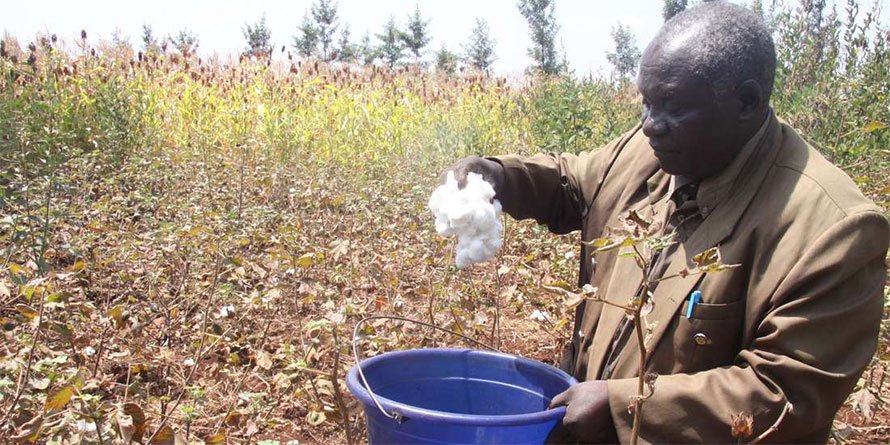At Kajiji village in Kirinyaga County, Julius Kiara knows too well that it will be another year of meagre earnings as he walks around his two-acre cotton farm.
To him this has been the trend in the past decade and he seems resigned to fate. There is nothing worthy that has come out of his cotton farming efforts.
The irony is that in less than 100 metres from his farm, a Genetically Modified (GM) cotton crop for trials, has been harvested four times since it was planted in February this year, while Mr Kiara is waiting to make a single harvest in 12 months.
From this farm, where 20 years ago he would have earned more than Sh40,000, he is expecting Sh20,000 this season due to a dwindling production impacted by pests in the region.
Scientists have just reported an emergence of mealybug, a new pest that is now ravaging cotton farms in the region. “I used to get 800 kilos of cotton from this two-acre farm about 15 years ago, but currently I get less than 200 kilos,” said Mr Kiara.

Scientists have been conducting National Performance Trials (NPTs) on cotton since last year following the intervention of State House after the initial attempts were stopped by the Ministry of Health and the National Environment Management Authority.
The NPTs have been conducted on different parts of the country with final season of the crop being the one that is in the field.
The performance of this GM cotton, which yields are four times more than the conventional one, has given Mr Kiara hopes that the cotton sector in the country can be revived. However, his hopes are being dampened by a ban on commercial cultivation of this biotech (Bt) variety.
“I have been surprised with this crop, how it performs with little water and yielding four times within a short time compared with mine. We have been told it is a superior seed called GMO, I do not know what that is but it is the variety that I want in order to revive my cotton farming,” he said.

Scientists have argued that the Bt cotton is resistant to pests and diseases and have the ability to withstand drought.
“This GM cotton is pest-resistant and drought-tolerant and it is the solution to the notorious bollworms that have been affecting production of the crop in the country,” says Charles Waturu, a senior scientist with Kenya Agriculture Livestock and Research Organisation (Kalro).
Under the big four agenda, the government is targeting manufacturing, especially through textile production, which has been dwindling over years, to create more jobs in the country.
Recently, President Uhuru Kenyatta re-commissioned Rivatex Company to promote production of locally made products using cotton that has been produced by the local farmers. Cotton production has been falling in the country since 1980s with Kenya relying on imports to bridge the deficit.
According to the directorate of fibre crops, Kenya requires 120,000 bales of lint per year, meaning that the country imports more than half of the required quantities to keep the factories running.

There are about four active ginneries in the country: Meru, Baringo, Makueni and Kitui.
The directorate has recently been giving incentives to farmers, which include planting materials and good price for their produce when they harvest.
For instance, the directorate has increased the buying price per kilo of the crop from Sh46 to Sh52 for the same quantity.
It has also created a ready market for farmers by having them sign contracts with the ginneries, offering them purchase without delay after harvesting, thereby minimising losses and cutting storage costs.
As a result, production is expected to increase from 10,672 tonnes last year to 30,000 tonnes this year, but will still remain way below the required volumes.
Kenya has a huge potential for cotton production. Although the country has more than 400,000 hectares of land suitable for cotton, less than 35,000 hectares are under the crop.
Kenya produces less than 12 million square metres of woven fabric per year, against a market demand of approximately 171 million square metres.
Because textile mills are operating at about 45 per cent capacity, even if all textile factories were to operate at 100 percent capacity, this would produce 26.7 million square metres of fabric, which is only 15.6 percent of the demand.


